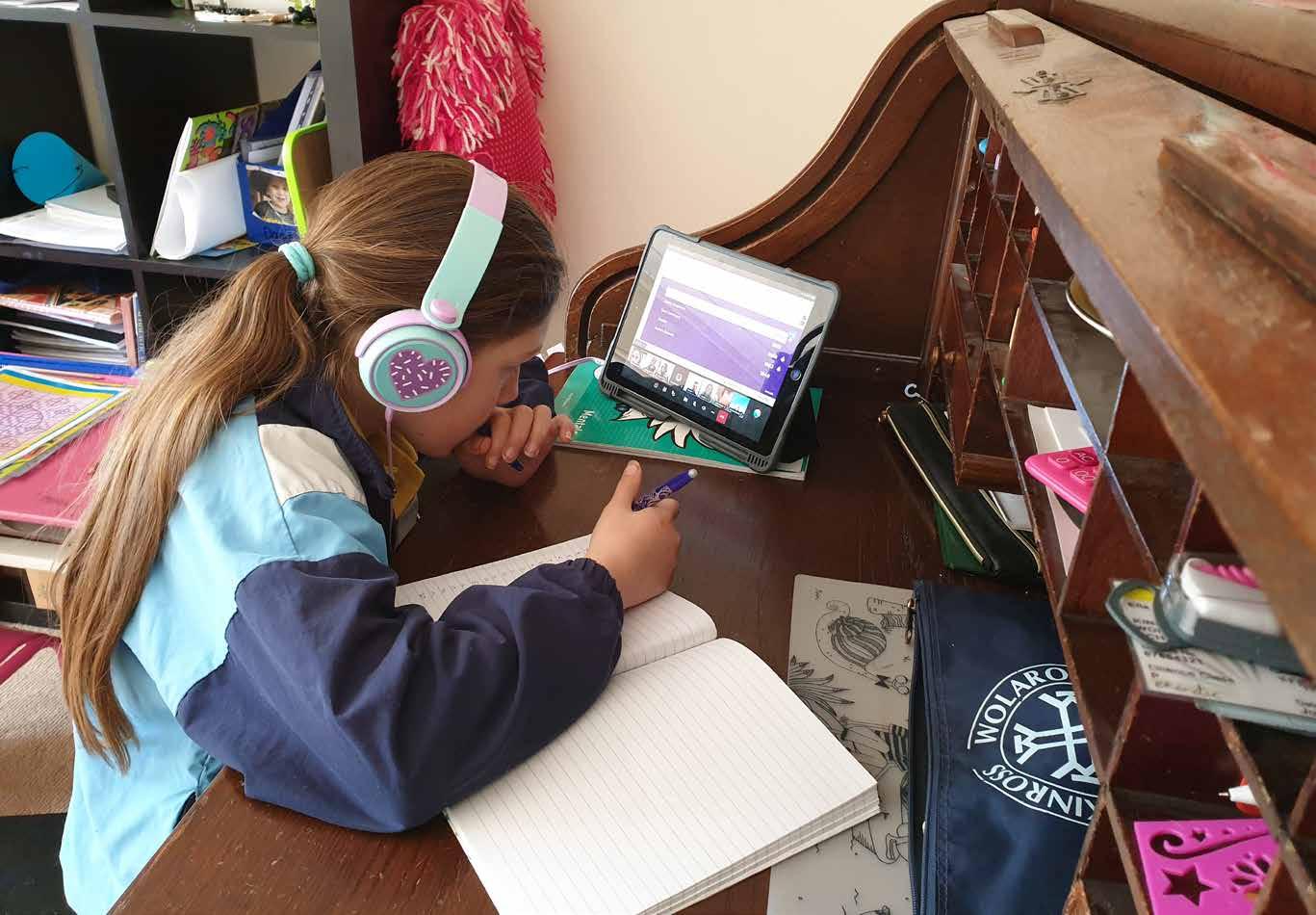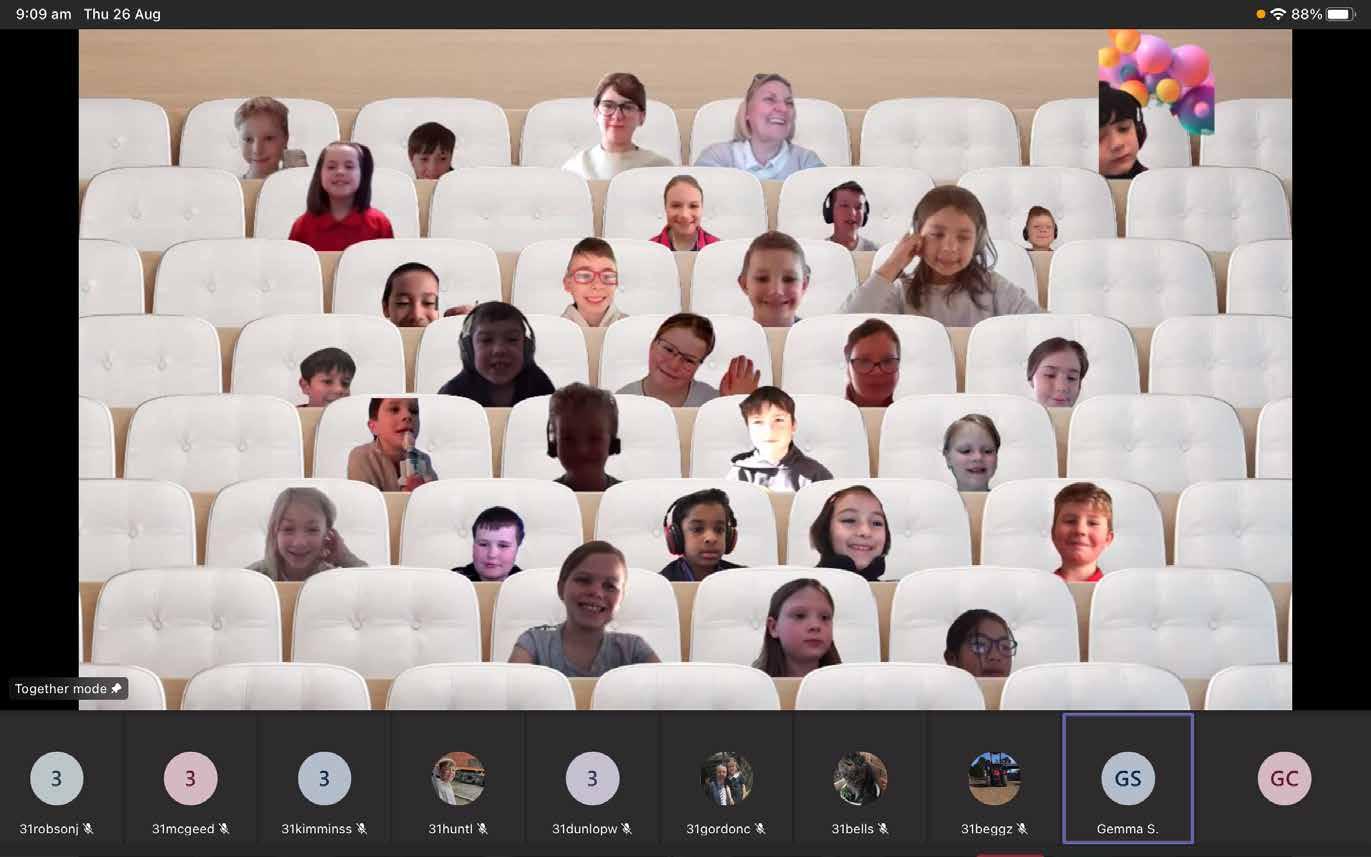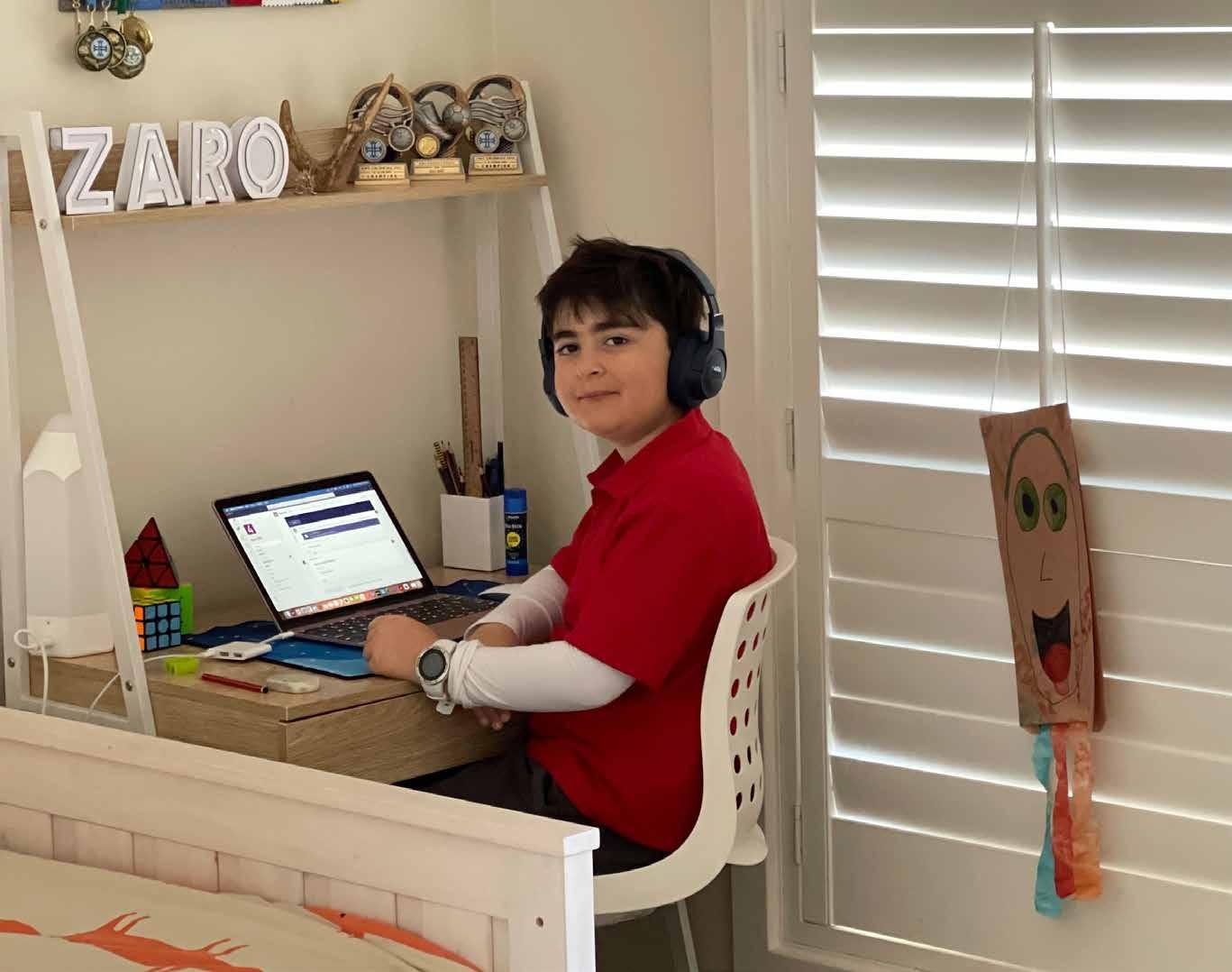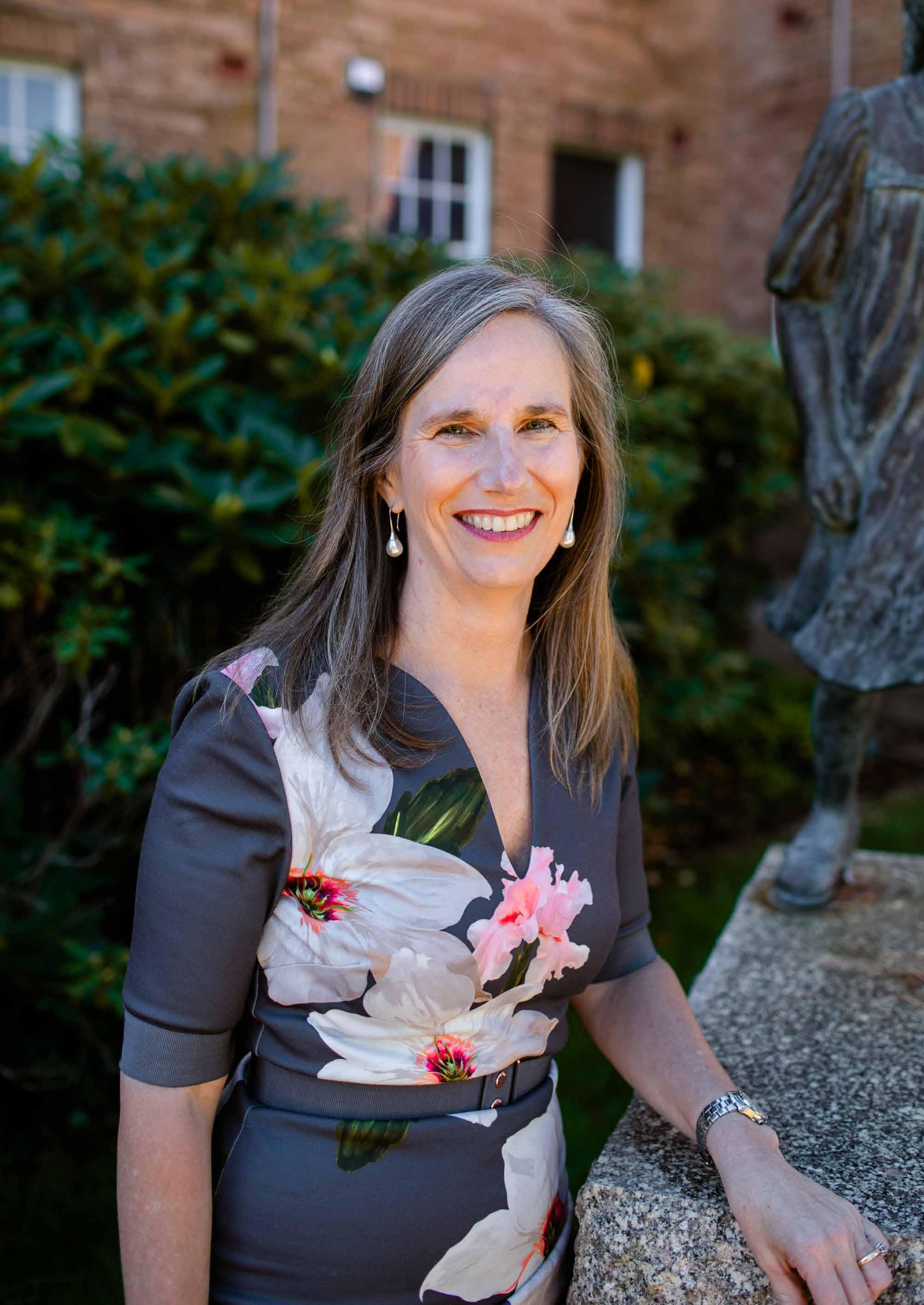
7 minute read
Junior School Blitzes Learning
- Denise Hayward, Head of Junior School
JUNIOR SCHOOL BLITZES REMOTE LEARNING
Denise Hayward, Head of Junior School
In 2021, the world moved cautiously into its second year of living with COVID-19. The Junior School was looking forward to a new year, with students on-site and all planned activities being able to take place, albeit with some modifications to meet health guidelines. However, as COVID-19 numbers began to climb towards the end of semester one, staff started refining plans in preparation for the region to return to online delivery. They knew how important it was to provide a flexible and uninterrupted delivery for students’ educational needs.
For a few weeks, staff not only planned face-to-face programs, but also for remote delivery - a program that would provide a structured school day and encouraged independent and flexible learning options. This meant when the first, one-week lockdown was introduced, we were able to pivot overnight to remote learning. We had learnt many lessons from 2020. With the improvements in ICT platforms, school systems and approaches to teaching online, we knew we had a remote learning offering that would be a more engaging and sustainable experience for students, families and staff. The short period of online learning set us up well when the longer lockdown was announced mid-way through term three.
We knew our delivery had to consider the different needs of our community and the fact that many families and staff were juggling multiple people working from home, the availability of devices, different levels of student independence and the strain all this placed on human relationships and on reliable connectivity and data. Our primary goal was to support students in a way that minimised any disruption to their learning - no easy feat when you are working with students from four years of age.
With all of this in mind, we developed a Remote Learning Program that provided students with direct instruction, online resources and classes led by teachers and support staff. This included a simplified timetable for students to follow, with breaks between lessons, opportunities for self-paced learning and regular wellbeing sessions. The structure of the day was very deliberate to provide screen breaks for students and staff alike. The plan was prepared with accommodations in mind for students who face challenges in accessing reliable internet. The partnership between the School and our families was of great importance during remote learning. Families were encouraged to reach out with any concerns about learning or wellbeing, with staff specifically assigned to monitor communication.
Just like learning on campus, there was a planned structure for each day of remote learning. This was designed with the best outcomes for student learning and wellbeing in mind, as well as to provide time for teachers to give feedback and plan lessons. The timetable was structured to reflect what is covered in a school day, with variations due to the unique opportunities learning from home provided. All key learning areas were scheduled, including specialist lessons. It was important we continued to deliver the whole curriculum for our students, not a partial offering. The core subjects of English and Maths were covered early in the day, followed by Humanities, •••
Junior School families picked up Remote Learning Packs to help set up their children from home.
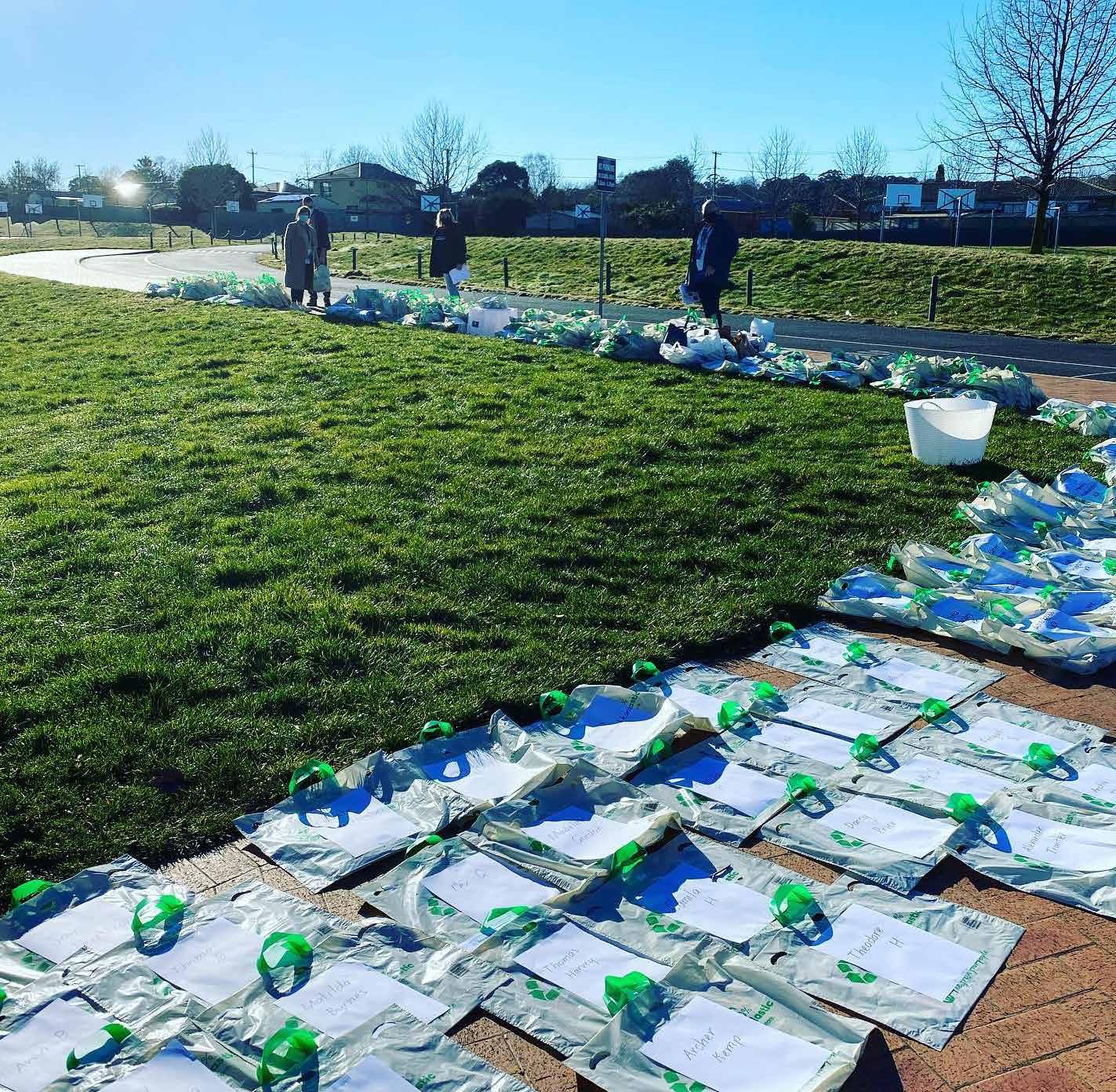
Sciences, and specialist subjects in the afternoon. A one-hour lunch before the final lessons of the day provided students and staff alike with a good ‘brain break’. This structure meant students had access to teachers throughout the day and teachers had time to provide feedback and plan lessons. Each day ended with staff gathering together to share tips on what was working and brainstorm solutions to what was not.
Families were provided with one whole school timetable to enable students and parents to map out online lessons across a number of different year groups. Weekly teaching and learning overviews, outlining lessons for the week, were available on Teams each Sunday by 5pm. These were updated each afternoon in preparation for the next day. By providing this, it was hoped families could plan their working arrangements and students could organise any specific materials they needed for a lesson from the take-home remote learning pack or from the digital resources provided online
Every day started with the whole grade gathering together. It was important to us that teachers were present at the start of each lesson for a period of explicit teaching, which was recorded and could be accessed at other times. We knew it was not always possible for a student to attend all lessons. Explicit teaching was followed by a task intended to provide students with the opportunity to continue to embed new knowledge and skills supported primarily by the involvement of the class or specialist teacher, teacher’s aides and for some students, due to their young age, parents and caregivers. Student work was submitted and returned using Seesaw in PreKinder to Year 2 and Teams for Years 3 to 6. These platforms enabled teachers to provide timely feedback as required.
Throughout remote learning, the content of what we taught did not change, but the delivery did to ensure
teaching and learning continued. We knew remote learning was about so much more than just setting work. It was about engaging with students and providing the support to ensure they were understanding and being able to apply what they were learning. It was important to us to maintain regular connections with students, to provide opportunities for peer-to-peer learning and collaboration. The real challenge of remote learning was maintaining relationships. So much of teaching is about relationships; being able to read a student’s body language, knowing when to provide support or when to step back. This crucial part of teaching is very hard to engage through a small screen.
Alongside remote learning, we offered on-site supervision for children of essential workers. Students working on-site followed the remote learning program, with support from teaching staff. The School catered for the learning of students from Pre-Kinder to Year 6 in the familiar grounds of the Junior School.
Remote learning provided many unique opportunities for students to authentically share who they are. The timetable was structured in lessons for students to explore things they were passionate about and develop ideas in the field of design and technology. This meant students could share how they worked on the farm, their passion for music or sport, or their love of construction using paper, lego, wood or metal. Students investigated topics they wanted to learn more about, from authors to world wars, the oceans to beekeeping. Students became teachers as they shared their interests with their peers.
Throughout remote learning, maintaining connections and sustainability was at the forefront of our minds. By creating a supportive, friendly environment, where learning loss and socio-emotional needs were acknowledged, we were able to make concerted efforts to keep students on track. We knew it was important to focus on specific foundational skills and knowledge instead of overloading students with academic and curriculum requirements. Only through being a motivated and supported community, with students, parents and staff working together, could the KWS Junior School community not only respond to, but also thrive, throughout the challenge of learning in a socially-distant manner.
